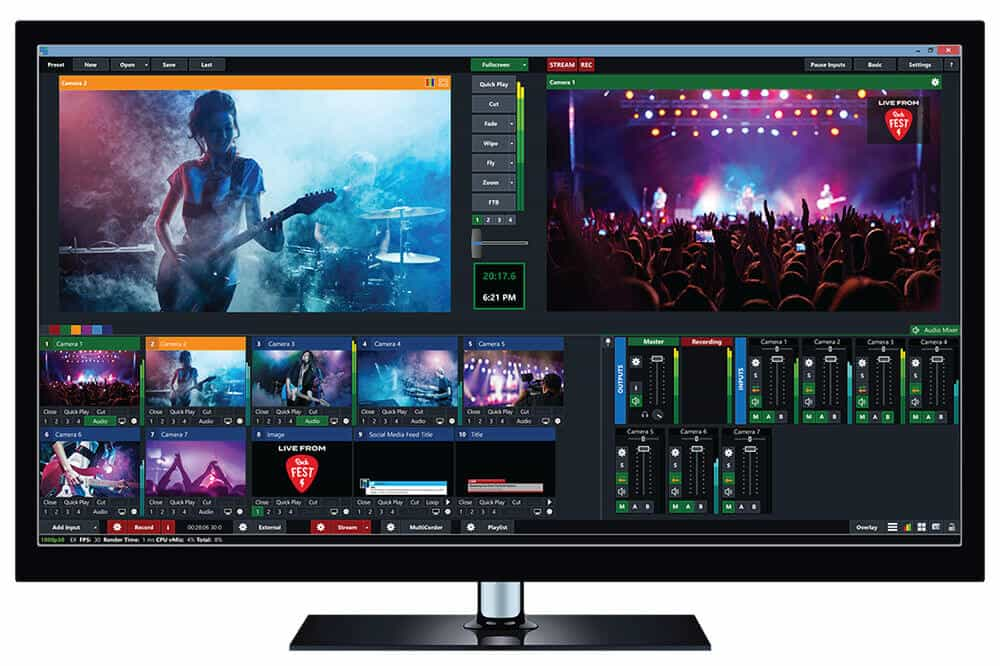MARKET OVERVIEW
Global Television Advertising market is estimated to reach $199.54 Million by 2031; growing at a CAGR of 5.8% from 2024 to 2031.
Global Television Advertising plays a crucial role in shaping consumer behavior, influencing purchasing decisions, and increasing brand awareness on a global scale. As consumer habits and technological advancements continue to evolve, the market will adapt to meet the needs of advertisers, content providers, and viewers. With various advertising models ranging from traditional TV to digital platforms, advertisers are presented with opportunities to reach a diverse audience through targeted campaigns. The integration of technological innovations like artificial intelligence and machine learning will enhance the accuracy of advertising campaigns, allowing for more effective targeting of specific demographics.
The future of the Global Television Advertising market will see a harmonious blend of traditional and digital advertising formats, catering to the demands for personalized content and dynamic ad placements. As streaming services and on-demand viewing experiences rise in popularity, advertisers will have the flexibility to adjust campaigns in real-time based on viewer preferences and habits. Regulatory frameworks will play a critical role in ensuring consumer privacy protection while maintaining transparency in advertising practices. The balance between regulation and innovation will be pivotal in driving sustainable growth in the market, as new trends, platforms, and technologies continue to shape the landscape of television advertising in the years to come.

GROWTH FACTORS
The television advertising industry is currently experiencing significant trends driven by various growth factors and challenges. The expansive reach, high viewership, and coverage that television provides to brands are key drivers of this market. Despite the presence of digital media, television still holds a unique power in captivating large audiences. Live broadcasts, sports events, and reality shows also play a crucial role in attracting advertisers due to their popularity and high viewer engagement. However, challenges such as the rise of ad-free streaming services and the high costs associated with TV advertising for small businesses may hinder market growth. Nevertheless, the future of TV advertising looks promising with the integration of digital platforms and interactive formats, leading to more targeted and personalized ads that can effectively reach the right audiences. As these innovations continue to evolve, the television advertising market is expected to expand further, offering new avenues for engagement and revenue for both brands and consumers.

MARKET SEGMENTATION
By Type
The landscape of Global Television Advertising is set to evolve with the advancements in technology. The shift towards personalized and interactive advertising is becoming more prominent as digital platforms and smart data analytics continue to progress. Traditional TV advertising will still hold its place in the market, targeting mass audiences during programs or shows. However, the focus is shifting towards more targeted and interactive experiences for brands. Connected TV (CTV) Advertising is projected to rise with the integration of internet-enabled TVs and other platforms, providing personalized ads based on consumer behaviors. Addressable TV Advertising will surge by targeting specific households and delivering personalized messages. Programmatic TV advertising will grow with automated buying and selling, offering more efficiency in reaching the right audience. Interactive TV advertising and innovative forms of sponsorships and product placements will also shape the future of television advertising. Ultimately, technological advancements will redefine how brands connect with consumers through dynamic, innovative, and customized advertising strategies.
By Revenue Model
The Global Television Advertising market has grown significantly over time, playing a pivotal role in how businesses promote their products and services to a wide audience. With various revenue models such as CPM, CPC, CPV, Fixed Rate Advertisement, and Performance-based Advertisement, advertisers have options to choose from based on their objectives and nature of advertising. Cost Per Mille, also known as Pay Per Impression, has become popular in television advertising, offering brands exposure to a large audience. As digital advertising rises, models like Cost Per Click and Cost Per View are gaining momentum due to their direct, measurable outcomes. Fixed Rate Advertising provides predictability for advertisers but may need to evolve to meet the demand for more targeted approaches. Performance-based Advertising, where advertisers pay for specific actions taken by viewers, is on the rise due to its accountability and ROI focus. As the industry continues to evolve, these revenue models will shape the future of television advertising, leading to more innovative growth and development in the coming years.
By Industry Vertical
Global Television Advertising has evolved into a crucial aspect of marketing strategies, playing a significant role in reaching a wide audience with advertisements for various goods and services. The revenue models in this sector have undergone significant transformations over time, shaping the pricing, delivery, and measurement of advertisements. With models such as Cost Per Mille (CPM), Cost Per Click (CPC), Cost Per View (CPV), Fixed Rate Advertising, and Performance-based Advertising, advertisers have a range of options to choose from based on their specific campaign goals and target audience.
Cost Per Mille, which charges advertisers for every thousand impressions, has been a longstanding model in television advertising due to its ability to reach a large audience and generate mass exposure for brands. As digital platforms continue to gain prominence, models like CPC and CPV have gained popularity for their direct and measurable outcomes. These models, which charge based on clicks or views, provide advertisers with the ability to track specific consumer actions, making them crucial in the evolving landscape of television advertising. Additionally, the shift towards Performance-based Advertising, where advertisers are charged based on viewer actions, reflects the growing emphasis on accountability and return on investment in advertising campaigns, leading to more efficient and targeted marketing strategies. As the global Television Advertising market continues to evolve, innovations focused on efficiency, targeting, and measurable outcomes will drive the future growth of this sector.
By Channel Type
The Global Television Advertising market is experiencing rapid transformation in response to evolving technology and changing consumer behaviors. The market is segmented based on channel types, including broadcast television, digital or streaming platforms, and local, national, and regional networks. Each channel type presents unique opportunities and challenges for advertisers looking to reach their target audience effectively.
Broadcast television, encompassing cable and satellite channels, has long been a cornerstone of advertising efforts due to its wide reach and ability to connect with large, diverse audiences. Despite the rise of digital media, cable and satellite channels remain relevant for advertisers seeking consistent reach, especially during high-demand events such as live sports and prime-time shows. Meanwhile, digital and streaming television platforms like Netflix, Hulu, and YouTube provide advertisers with precise targeting capabilities based on viewer preferences and habits, making them a promising avenue for future television advertising efforts. As technology continues to advance, the integration of artificial intelligence and augmented reality is expected to play a significant role in shaping the future of television advertising, with a focus on programmatic ads and customized content to enhance brand-to-audience connections.
REGIONAL ANALYSIS
The Global Television Advertising market has played a crucial role in shaping marketing strategies worldwide, serving as a key platform for businesses to connect with diverse audiences. Through regional analysis, it is evident that different regions exhibit unique trends and opportunities that are influencing the future of television advertising. Geographically, the market is divided into North America, Europe, Asia-Pacific, South America, and the Middle East & Africa, each showcasing distinct characteristics based on cultural preferences, technological advancements, and economic conditions.
In North America, the United States stands out as a dominant force in television advertising, supported by advanced digitalization and widespread television access. Canada and Mexico also contribute significantly to the region's advertising landscape, catering to diverse audience demographics and emerging industries. Meanwhile, Europe's television advertising market is led by countries like the UK, Germany, France, and Italy, known for their rich broadcasting history and continuous adaptation to new technologies. The region's focus on local content and strong broadcasting infrastructure creates a competitive environment that appeals to advertisers. The Asia-Pacific region, including India, China, Japan, and South Korea, is emerging as a lucrative market for television advertising, driven by urbanization, rising disposable incomes, and increased television penetration in rural areas. With a strong emphasis on culturally relevant content and data-driven targeting strategies, advertisers are finding success in engaging with specific consumer groups in these countries. In South America, Brazil and Argentina lead the way with vibrant cultural content and investments in television infrastructure, while the Middle East & Africa region, including the GCC countries, Egypt, and South Africa, is witnessing a mix of traditional and modern advertisement approaches gaining popularity. These regions are investing heavily in television networks to expand reach and engage diverse audiences, highlighting the potential for growth and innovation in the global television advertising market.

KEY INDUSTRY PLAYERS
Global Television Advertising has been a cornerstone of the advertising industry, providing brands with a dynamic platform to engage audiences worldwide. Despite the rise of digital advertising, television advertising remains a vital medium due to its broad reach across diverse demographics. As technology and consumer habits evolve, the industry continues to show immense growth potential, promising exciting developments for stakeholders and viewers alike.
Key players in the television advertising sector, such as Comcast Corporation, ViacomCBS Inc., and The Walt Disney Company, have been at the forefront of innovation, leveraging technology to enhance targeting capabilities and deliver higher returns on investment for advertisers. Meanwhile, companies like NBCUniversal Media, LLC, ITV plc, and Sky Group Limited are exploring new avenues for audience analytics to increase platform relevance and benefits for advertisers. The market is witnessing the emergence of trends like addressable TV and hybrid models, ushering in a new era of personalization and regional content development tailored to specific audience segments and cultural preferences.
The integration of advanced technologies like artificial intelligence and machine learning is set to revolutionize the global television advertising market, enabling companies such as Grupo Televisa, AMC Networks Inc., and TV Asahi Corporation to reach unprecedented scales. While facing competition from digital platforms and shifting viewer behaviors, the industry's adaptability and the innovative efforts of established leaders and new entrants will ensure its continued relevance in the advertising landscape. As brands strive to connect with consumers in increasingly meaningful ways, the Global Television Advertising market will remain a crucial component in their marketing strategies.
REPORT SCOPE AND SEGMENTATION
|
Attributes |
Details |
|
Market Size By 2031 |
USD 199.54 Million |
|
Growth Rate |
CAGR of 5.8% |
|
Forecast period |
2024 - 2031 |
|
Report Pages |
250+ |
|
By Ad Type |
|
|
By Revenue Model |
|
|
By Industry Vertical |
|
|
By Channel Type |
|
|
By Region |
|
|
Key Market Players |
|



_page-000168.jpg)
_page-000167.jpg)
_page-000166.jpg)
_page-000165.jpg)






 APAC:+91 7666513636
APAC:+91 7666513636





